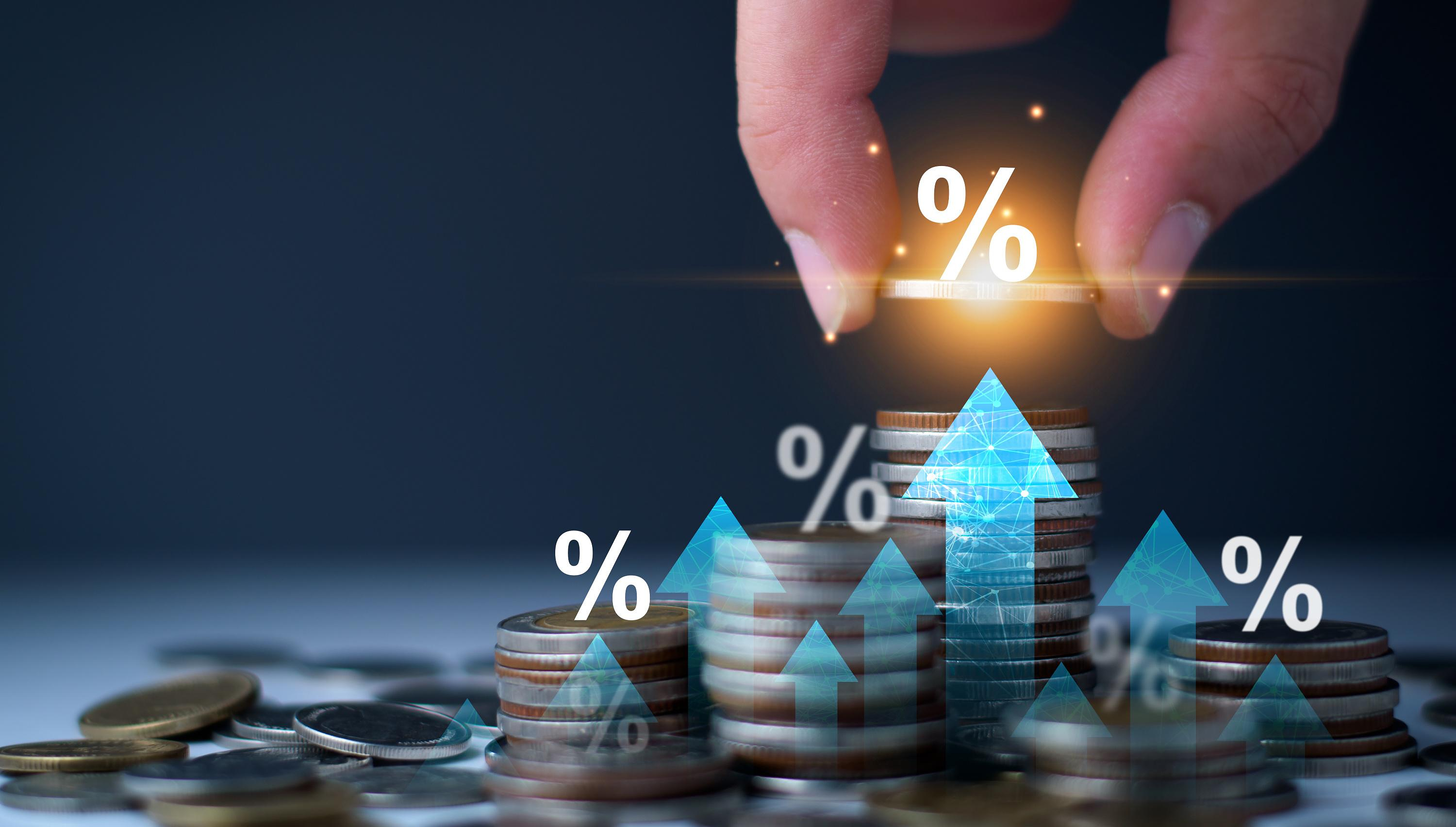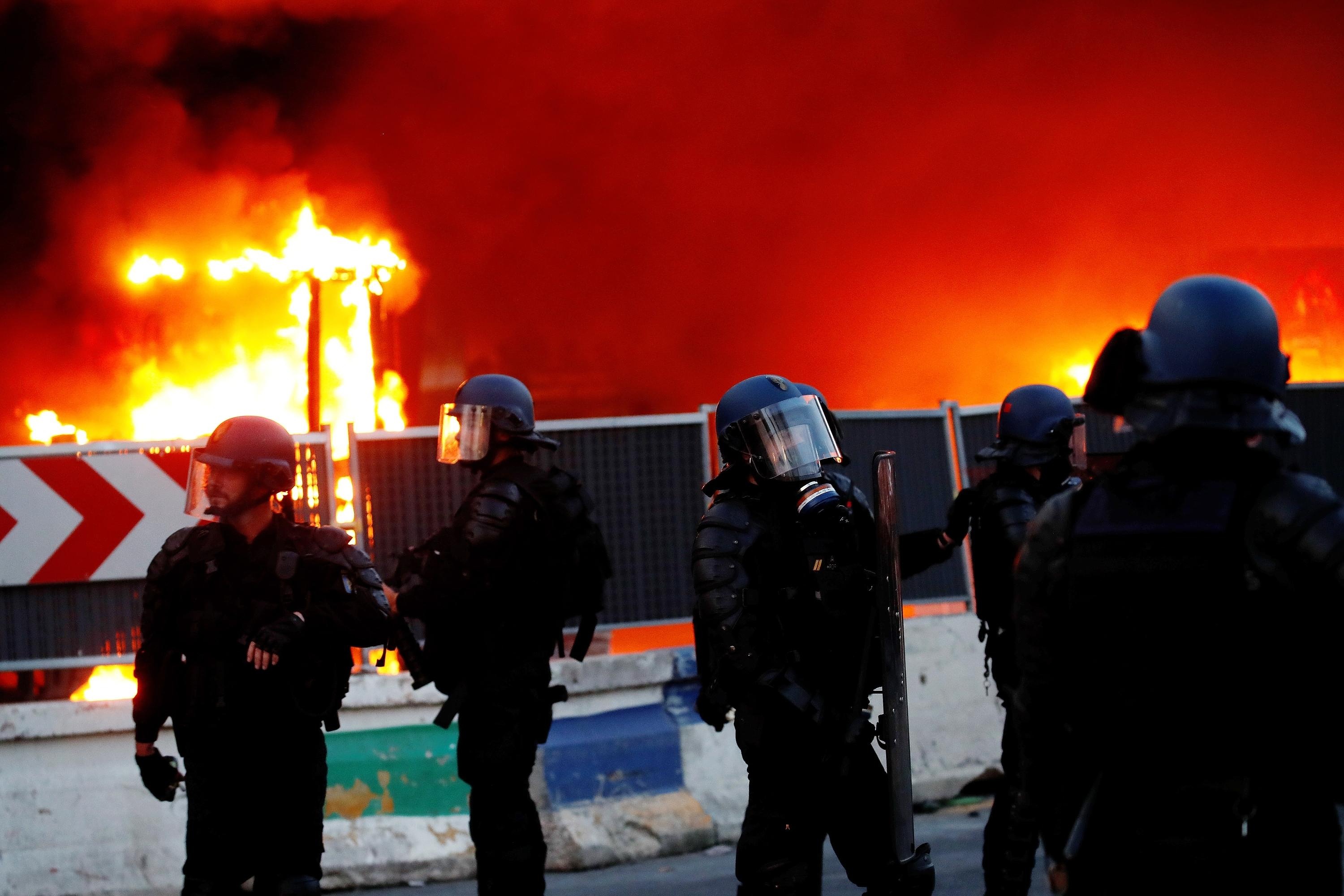San Francisco City Hall has become a symbol of his city's contradictions. A huge, imposing building, the dome higher than that of the Capitol in Washington DC. All around, however, there is above all human misery. Not a day goes by here without meeting at least one person who is visibly in another world. People mumbling to themselves, wildly insulting imaginary enemies, or yelling out loud from delusions, high on drugs, or plagued by mental illness.
The town hall itself is increasingly at a loss. Californian San Francisco actually has a lot that makes it a city worth living in: a good climate, economic success, extensive Pacific beaches, great nature, large parks, good restaurants, beautiful houses. But the problems are increasing and the residents are dissatisfied.
In a recent major poll, two-thirds of San Francisco residents surveyed said the quality of life in the city had deteriorated in recent years. In particular, public safety, the drug and homelessness problem and the exorbitant housing prices are affecting people - and also calling their self-image into question. After all, well-heeled San Francisco and the surrounding Bay Area is one of the most politically progressive parts of the United States. But there is an increasing lack of functioning answers to price levels and misery.
Throughout its history, San Francisco has had to reinvent itself over and over again. First came the gold rush, then the great earthquake of 1906. Later came the hippie movement, and finally in the 2000s the tech boom that completely changed the face of the city. Since then, people have been able to earn a lot of money with their work here, it was a new, digital gold rush. But the peak of this boom seems to have passed.
Recession fears are also fueling layoffs in California. In 2022, almost 13,000 jobs were lost in San Francisco's tech industry. Start-ups are shrinking, and the mood is also tense among tech giants such as Apple, Google and Meta.
It's only really busy around the skyscrapers of downtown San Francisco from Tuesday to Thursday. On Mondays and Fridays, the remaining employees of LinkedIn, Twitter or Salesforce are mostly in the home office, half the week the financial district is like a ghost town. Offices and commercial spaces are empty and the local press regularly asks: What's next here?
On the other hand, people from the other end of the social ladder are always present in the city center. They can't work from home because they don't have a home or office. Although the absolute number of homeless people in San Francisco has recently fallen slightly, this could also be due to the fact that some of them simply died.
Because the biggest elixir of misery in San Francisco is called fentanyl, the highly dangerous king drug of the opioid crisis, in the course of which millions of Americans have become dependent on recklessly prescribed but highly addictive painkillers such as oxycodone since the turn of the millennium.
Actually, fentanyl is also primarily used in medicine – it helps tumor patients 80 times more than morphine, for example. However, it is now particularly dangerous as a hidden extender in other drugs such as heroin, cocaine, meth or oxycodone, where it significantly increases the intoxicating effect, but can also kill quickly if it is distributed incorrectly or if the dosage is too high.
San Francisco is now one of the countries hardest hit by the fentanyl epidemic. Since 2020, 1500 people in the city have died from an overdose, the youngest victim was 14 years old. At the same time, a lot of money is made, as the anti-drug agency DEA breaks down: The fentanyl in San Francisco's drugs usually originally comes from China, where it is manufactured and shipped to Mexico. From there, the powerful drug cartels smuggle it into the United States.
It is then sold disproportionately often by Hondurans in San Francisco. These are recruited by smugglers in their Central American homeland with the promise of lifting them out of poverty and into a better life in the United States. Once there, the smugglers introduce them to the local drug trade - and collect a share of their earnings as a "thank you".
However, no action is actually taken against this. It's one of the city's contradictions: while bouncers excitedly snatch glasses from bar and club guests if they step even a few feet onto the public sidewalk with an alcoholic drink, the open consumption of the hardest drugs is on the streets of San Francisco everyday.
Several times WELT saw people lying completely motionless on the sidewalk in broad daylight, completely knocked out by a dose of hard drugs. Others stare into space like human zombies. In such situations, security guards and police officers standing next to them often only wave them away. Over the summer, a video posted by a local vlogger of children getting off the school bus and bumping into about a dozen visibly scarred junkies went viral.
The local public prosecutor's office under the "District Attorney" Chesa Boudin, who is directly elected by the people in most US states, has long followed a very long leash: drug dealers were hardly prosecuted, also because the prisons are understaffed - there is a lack of young people - Correctional Officers. But even when dealers were busted, new ones just kept coming.
In the summer, the citizens of San Francisco had the faxes thick - they voted out Boudin. "People were fed up with crime, overdoses and the lack of accountability in this city," said Wade Shannon of the DEA, explaining the change in leadership.
In a fire letter published in the local press at the end of July, the local pastor Amos Brown also called for an “end to homeless terror” and lamented false tolerance of “bad people”. Shortly before, a social worker had been beaten to the hospital in broad daylight with wooden slats after asking several men to clear the entrance to a playground.
“Our streets are full of needles and human feces, they stink of urine. The city is confusing mercy with complacency,” Brown lamented. His demand: Anyone who misbehaves must also feel the consequences, even if he or she is already in a difficult life situation.
“Nobody should be locked up because they are homeless. It's about stopping violence and providing long-term help for people with substance abuse problems and mental illness," Brown said. He also complained that aid money was widely distributed among various NGOs, which "collect a lot but achieve little".
One of the city's first reactions to the criticism was to close a central contact point for the homeless at the end of the year: The Tenderloin Center, right downtown, a stone's throw from City Hall and the well-known Union Square. So far, those affected have been given food, showers, addiction counseling and basic medical care. But as a result, they also clustered in a few streets of the city center.
The next attempt in the fight against the opioid epidemic was to set up public, medically supervised consumption rooms. Such a pilot project was able to reduce the number of overdoses in New York. But at the last second, California Governor Gavin Newsom (Democrats), who had long supported the idea, backed down. According to political analysts, he feared the project could harm him in the event of a US presidential bid in 2024.
At the same time, San Francisco - like many other US cities - lacks a functioning support system for the mentally ill. Clinics are overloaded and have far too few care places for acute cases. People on the street are usually left to their own devices and their fate. An example of this is the story of Sean Messer. One of those people who, plagued by delusions, has been yelling around for years. Local residents called aid organizations again and again, but they often only arrived hours later and Messer never really helped. In August he finally lay dead in front of a restaurant, at the age of only 42.
In addition to drugs, the housing market, which has gone completely out of control, is one of the big problems in San Francisco, which is by far the most expensive city in the USA for housing. Without an annual salary of at least $125,000, one officially lives below the poverty line in San Francisco, and an average two-bedroom apartment here costs $3,600 a month on average in the city.
Supermarket employees, taxi drivers or baristas with whom WELT spoke consistently stated that they lived in Oakland, the port city at the other end of the Bay Bridge. They cannot afford to stay in San Francisco.
One reason for the housing shortage in San Francisco: the predominantly flat development. In the 1980s, the aim was to prevent the city from being "Manhattized". Only in the economic and financial district in downtown are there high-rise buildings; everywhere else, houses with just a few floors are the norm, often in the Victorian style. Architecturally, this is sometimes beautiful – but in terms of urban planning, it is inefficient.
That's why the plan is to build higher again, to ten to twenty floors, which will completely change the cityscape. A total of 80,000 new apartments are to be built by 2031 - a requirement from the state of California. If it is not implemented, the city faces a cut in state funds, including hundreds of millions of dollars for local public transport.
A radical measure that Governor Newsom considers necessary in view of the housing shortage. Because housing construction in San Francisco is progressing at a snail's pace: extremely lengthy approval processes take significantly longer than in other US cities, on average 27 months - also due to the power of residents and neighbors who want to keep their neighborhoods as they are and traditionally have a lot of say to have. It's again one of the city's contradictions: the people are actually very progressive and socially minded, but they don't want taller buildings blocking their view either.
Recently, a civil rights group sued the city of San Francisco on behalf of several homeless people over decades of housing inaction. This forced tens of thousands of people to seek shelter in tents and vehicles. According to the lawsuit, the city would have to build nearly 6,700 new affordable apartments to accommodate each currently homeless person. Estimated cost: $4.8 billion.
But building in San Francisco isn't just a problem because of the local residents. It is also complicated by the floor. Parts of San Francisco sit on sand dunes, swampy ground, or other wet ground. That makes these areas particularly vulnerable to ground liquefaction during earthquakes — and by 2032, one is expected to be around magnitude 7.0 in the Bay Area.
A third of the currently planned zones for affordable housing are threatened by seismic activity. Overall, half of San Francisco's industrial buildings and a third of its businesses are also located in areas that could simply sink into the ground from landslides in a strong earthquake: the marina, parts of South Market and downtown.
In mid-September, Bay Area residents were once again reminded of what lies beneath their soil. Anyone who had the well-recommended early warning app "MyShake" installed on their cell phone received a warning about a magnitude 5.0 earthquake on a Tuesday evening about a minute in advance. This was comparatively harmless, but it has already damaged gas lines in nearby Santa Rosa and was felt by hundreds of thousands of residents in the greater area.
As the local press began investigating how prepared San Francisco is for a major earthquake, it was revealed that it would also cost billions to upgrade the water supply to withstand a major tremor—again, specifically with a view to threatened fire would be a big problem.
The city-wide conversion of the elevators has also been too expensive up to now: In the event of a strong earthquake, a sustained power failure is expected within seconds. As a result, around 20,000 people would get stuck in elevators - and due to the great burden on the fire brigade in such a case, they would not be freed at first. According to official disaster scenarios, hundreds would die there.
But at least: The earthquake early warning system via the app works even before the earthquake is felt. While a minute is too short for major action, it can prevent many injuries and deaths by people taking cover – or exiting elevators.
Before the big earthquake, however, San Francisco's self-image is now in question. WELT met an embodiment of this mixture of disorientation and moral inconsistency at a neighborhood meeting in Alamo Square in the summer. The 30-year-old data analyst Matt, himself a victim of the tech layoffs, was now looking for a job.
In the conversation, he emphasized that for moral reasons he would never work for the Facebook parent company Meta, nor for companies that could be in any way indirectly linked to the US defense industry or the secret services. Almost in the same breath, however, he revealed that he had just applied for a job at ByteDance, TikTok's Chinese parent company, which has close ties to the totalitarian communist regime. He had no moral problem with that, he explained when asked.
But there was also an alternative to Matt: 29-year-old black entrepreneur Andrew. He was completely annoyed by the culture war between the woken left and the populist, arch-conservative right, which is also present in California politics.
“As a society, we are currently not developing further, but backwards. The extreme forces on both political fringes are preventing progress. All these ideologies create with their identity politics is even more segregation and division. Everyone stays in their bubble, nobody talks to each other anymore, only to each other".
Andrew prefers to get down to business, develop things, find solutions. Away from ideology towards pragmatism - San Francisco also seems to be heading in this direction. Only in this way, it seems, can the city's problems really be solved.
A city that still has a lot to offer. Although the quality of life in San Francisco has declined according to the survey, it still remains high. "Despite the risk of earthquakes and all the problems - in the end people settle here for two main reasons: the healthy climate and the great views," says city guide John Hurst during a walking tour through the city.
In the winter, the east coast of the USA looks enviously in the midst of its snowstorms at the mild west coast, where it hardly gets colder than ten degrees. San Francisco's summers are consistently mild thanks to the Pacific Bay microclimate, while half the country and even upstate San Francisco groan from heat waves, droughts, and wildfires.
A surprising number of German tourists also made the trip to San Francisco over the summer, despite high flight prices, a poor euro exchange rate and chaos at the airports. Hardly a day went by when German was not spoken in Fisherman's Wharf or at the Golden Gate Bridge. Only not so many tourists dared to go to the town hall.

 What is chloropicrin, the chemical agent that Washington accuses Moscow of using in Ukraine?
What is chloropicrin, the chemical agent that Washington accuses Moscow of using in Ukraine? Poland, big winner of European enlargement
Poland, big winner of European enlargement In Israel, step-by-step negotiations for a ceasefire in the Gaza Strip
In Israel, step-by-step negotiations for a ceasefire in the Gaza Strip BBVA ADRs fall almost 2% on Wall Street
BBVA ADRs fall almost 2% on Wall Street Children born thanks to PMA do not have more cancers than others
Children born thanks to PMA do not have more cancers than others Breast cancer: less than one in two French women follow screening recommendations
Breast cancer: less than one in two French women follow screening recommendations “Dazzling” symptoms, 5,000 deaths per year, non-existent vaccine... What is Lassa fever, a case of which has been identified in Île-de-France?
“Dazzling” symptoms, 5,000 deaths per year, non-existent vaccine... What is Lassa fever, a case of which has been identified in Île-de-France? Sánchez cancels his agenda and considers resigning: "I need to stop and reflect"
Sánchez cancels his agenda and considers resigning: "I need to stop and reflect" “Amazon product tester”: the gendarmerie warns of this new kind of scam
“Amazon product tester”: the gendarmerie warns of this new kind of scam “Unjustified allegations”, “promotion of illicit products”… Half of the influencers controlled in 2023 caught by fraud repression
“Unjustified allegations”, “promotion of illicit products”… Half of the influencers controlled in 2023 caught by fraud repression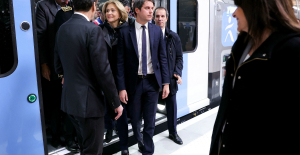 Extension of the RER E: Gabriel Attal welcomes a “popular” ecology project
Extension of the RER E: Gabriel Attal welcomes a “popular” ecology project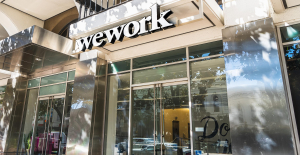 WeWork will close 8 of its 20 shared offices in France
WeWork will close 8 of its 20 shared offices in France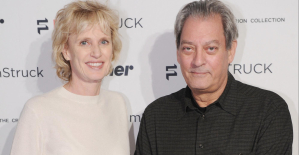 “We were robbed of this dignity”: Paul Auster’s wife denounces the betrayal of a family friend
“We were robbed of this dignity”: Paul Auster’s wife denounces the betrayal of a family friend A masterclass for parents to fill in their gaps before Taylor Swift concerts
A masterclass for parents to fill in their gaps before Taylor Swift concerts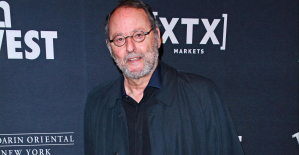 Jean Reno publishes his first novel Emma on May 16
Jean Reno publishes his first novel Emma on May 16 Cannes Film Festival: Meryl Streep awarded an honorary Palme d’Or
Cannes Film Festival: Meryl Streep awarded an honorary Palme d’Or Omoda 7, another Chinese car that could be manufactured in Spain
Omoda 7, another Chinese car that could be manufactured in Spain BYD chooses CA Auto Bank as financial partner in Spain
BYD chooses CA Auto Bank as financial partner in Spain Tesla and Baidu sign key agreement to boost development of autonomous driving
Tesla and Baidu sign key agreement to boost development of autonomous driving Skoda Kodiaq 2024: a 'beast' plug-in hybrid SUV
Skoda Kodiaq 2024: a 'beast' plug-in hybrid SUV The home mortgage firm rises 3.8% in February and the average interest moderates to 3.33%
The home mortgage firm rises 3.8% in February and the average interest moderates to 3.33% This is how housing prices have changed in Spain in the last decade
This is how housing prices have changed in Spain in the last decade The home mortgage firm drops 10% in January and interest soars to 3.46%
The home mortgage firm drops 10% in January and interest soars to 3.46% The jewel of the Rocío de Nagüeles urbanization: a dream villa in Marbella
The jewel of the Rocío de Nagüeles urbanization: a dream villa in Marbella Europeans: a senior official on the National Rally list
Europeans: a senior official on the National Rally list Blockade of Sciences Po: the right denounces a “drift”, the government charges the rebels
Blockade of Sciences Po: the right denounces a “drift”, the government charges the rebels Even on a mission for NATO, the Charles-de-Gaulle remains under French control, Lecornu responds to Mélenchon
Even on a mission for NATO, the Charles-de-Gaulle remains under French control, Lecornu responds to Mélenchon “Deadly Europe”, “economic decline”, immigration… What to remember from Emmanuel Macron’s speech at the Sorbonne
“Deadly Europe”, “economic decline”, immigration… What to remember from Emmanuel Macron’s speech at the Sorbonne These French cities that will boycott the World Cup in Qatar
These French cities that will boycott the World Cup in Qatar Champions Cup: Toulouse with Flament and Kinghorn against Harlequins, Ramos replacing
Champions Cup: Toulouse with Flament and Kinghorn against Harlequins, Ramos replacing Tennis: still injured in the arm, Alcaraz withdraws from the Masters 1000 in Rome
Tennis: still injured in the arm, Alcaraz withdraws from the Masters 1000 in Rome Sailing: “Like a house that threatens to collapse”, Clarisse Crémer exhausted and in tears aboard her damaged boat
Sailing: “Like a house that threatens to collapse”, Clarisse Crémer exhausted and in tears aboard her damaged boat NBA: Patrick Beverley loses his temper and throws balls at Pacers fans
NBA: Patrick Beverley loses his temper and throws balls at Pacers fans





